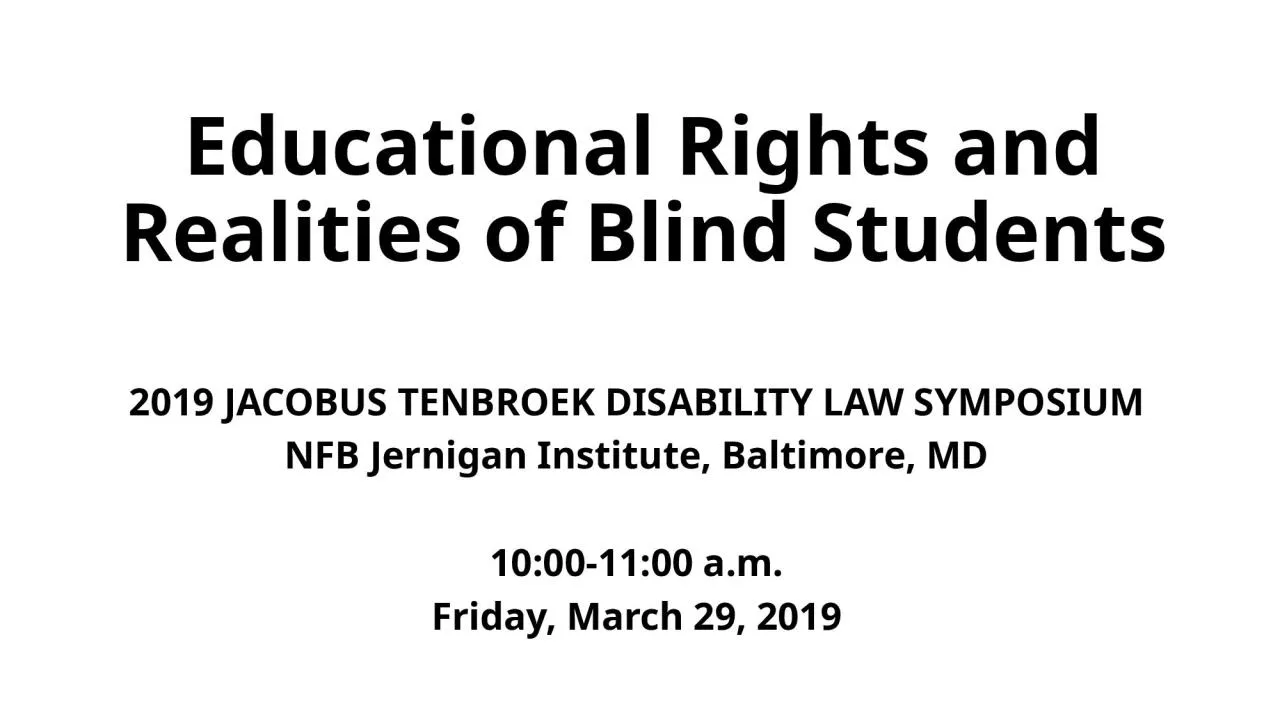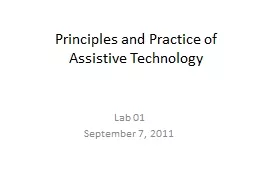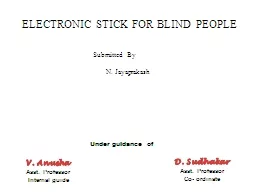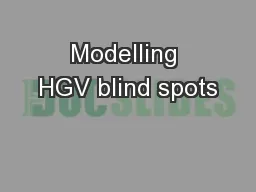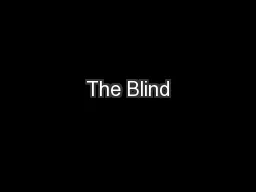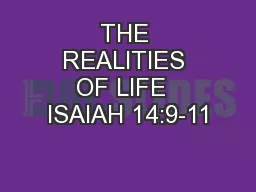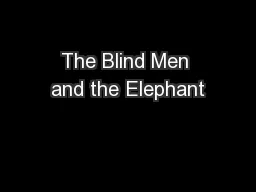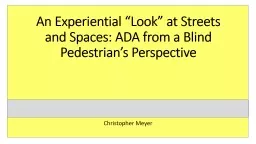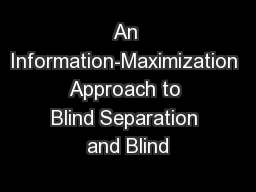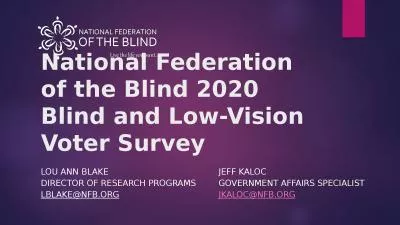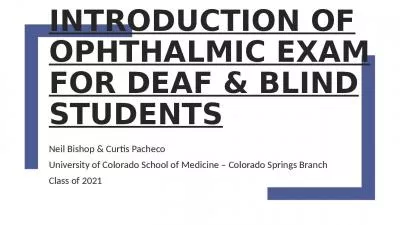PPT-Educational Rights and Realities of Blind Students
Author : rose | Published Date : 2022-06-01
2019 JACOBUS TENBROEK DISABILITY LAW SYMPOSIUM NFB Jernigan Institute Baltimore MD 10001100 am Friday March 29 2019 Carlton Anne Cook Walker Owner of CAC Walker
Presentation Embed Code
Download Presentation
Download Presentation The PPT/PDF document "Educational Rights and Realities of Blin..." is the property of its rightful owner. Permission is granted to download and print the materials on this website for personal, non-commercial use only, and to display it on your personal computer provided you do not modify the materials and that you retain all copyright notices contained in the materials. By downloading content from our website, you accept the terms of this agreement.
Educational Rights and Realities of Blind Students: Transcript
Download Rules Of Document
"Educational Rights and Realities of Blind Students"The content belongs to its owner. You may download and print it for personal use, without modification, and keep all copyright notices. By downloading, you agree to these terms.
Related Documents

